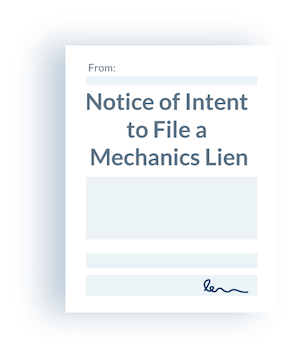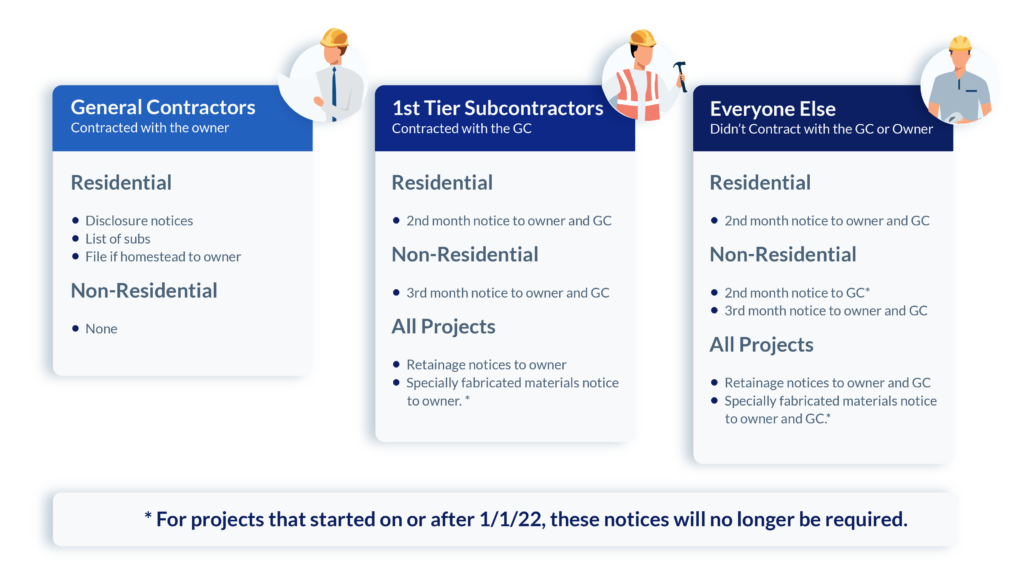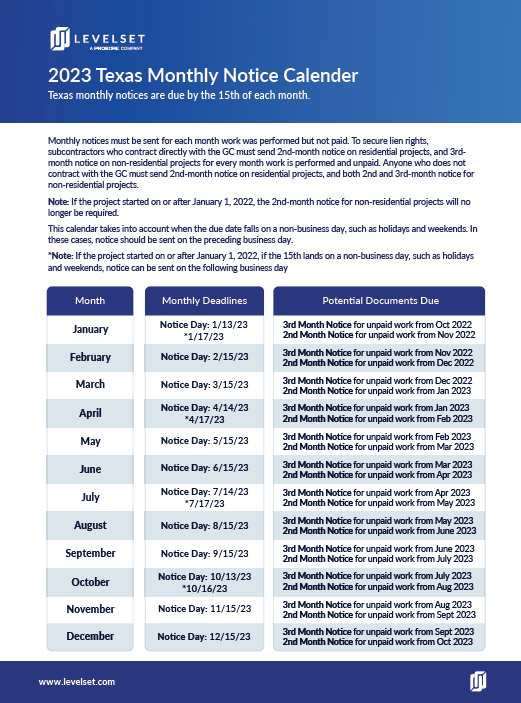
Everything’s bigger in Texas – including the Longhorn state’s lien laws! Especially if you typically work in a different state, you may already be familiar with documents like a Notice of Intent to Lien or a demand letter. But you may not be as familiar with the monthly fund-trapping notices required on most projects in Texas. In this article, we’ll explore the key differences between your typical Notice of Intent and the recurring Texas monthly notices.
Notice of Intent to Lien
A Notice of Intent to Lien, also called an NOI, is really a type of demand letter is a document commonly found throughout the business world, and not just specific to construction.
Contractors or suppliers may send this document when they are trying to collect on a slow-paying job. An Notice of Intent to Lien is very similar to Demand/ Dunning Letter, but it’s more specific to the construction industry and carries a bit more weight than an every-day demand letter.
The Notice of Intent gives a “warning” that the potential claimant intends to take definitive legal action (specifically, filing a mechanics lien on the property) if they don’t receive the payment they’ve earned.
Nine states require notices of intent to lien be filed before filing the actual lien, but Texas isn’t one of them. In states where it isn’t a requirement for lien rights, contractors and suppliers may opt to send a voluntary notice of intent to send a warning prior to moving forward with the lien itself.
It’s a great way to show your customer and others on the job that you are serious and will not hesitate to file a lien in needed due to continued non-payment. In many instances, sending a Notice of Intent is enough to speed up payment from a delinquent customer since the threat of a potential mechanics lien is that great.
However, in Texas beware not to confuse the Notice of Intent with the Texas Fund Trapping Notice. This is a frequently occurring mistake for folks in the construction industry in Texas, and making this mistake could be fatal to your lien rights.

Send a Notice of Intent to Lien for Free
We’re the Notice of Intent experts. With us it’s fast, easy, and done right. And it's free.
Send NowWhat is a Monthly Fund-Trapping Notice in Texas?
Texas has a required monthly notice that applies to most subs and suppliers doing work on construction projects. General contractors however, are excluded from this recurring, monthly notice requirement.
Practically speaking, the “Texas Monthly Notice” document falls somewhere in between a preliminary notice (proactively sent at the start of a project) and a notice of intent to lien (reactively sent when payment is late).
Because the document occupies this in-between, grey area, many folks get confused by the document and end up sending a document they are more familiar with; the notice of intent to lien. Since the notice of intent to lien is not required in Texas, it has no legal impact or influence on your project nor lien deadlines.
Texas is nearly unique in that a separate notice is required for every month a project participant furnishes labor and/or materials (provided the participant is unpaid for at least a portion of the labor and/or materials provided in that month).
This means that, on an extended project, a company can be required to send a large volume of notices. What makes things even more complicated, when viewed in light of the confusingly drafted Texas statutes, is that some parties are required to send more than one notice for each month unpaid labor and/or materials were furnished – and potentially, those notices may be required to be sent in different months.”

A Notice By Any Other Name?
Even if you are familiar with the monthly notice requirements in Texas, it can still be confusing because many folks refer to the document by different names. Some of the many names used by Texas construction companies are:
- 2nd or 3rd Month Notice
- Fund-Trapping Notice
- or just the Texas Notice
Additionally, some companies actually refer to the required fund-trapping notice incorrectly as a Notice of Intent to Lien, which only leads to more confusion. Like we said at the very beginning of this post, it’s not for nothin’ that Texas has the most confusing and complicated lien requirements in the United States!
Here at Levelset, we’ve simplified the terminology and simply refer to the document as a Monthly Notice. By using a simplified term like “Monthly Notice,” you do not have to stress about which month you’re sending notice for and all of the other confusing details in between. And when supplied by Levelset, the document itself, includes the necessary verbiage that is compliant with the state statutes.

Download the 2023 Texas Monthly Notice Calendar
This calendar takes the guesswork out of calculating the deadline for your Texas monthly notices. We update it annually.
Download the calendarKey differences between
Recurring Texas Notices and Notices of Intent:
To start, a very obvious and easy difference is that the ‘Recurring Texas Notices’ are required, and Notices of Intent are not required in Texas. Because of this, all other key differences fall into place:
When to send the document(s)
Recurring Texas Notices:
For subs and suppliers, this is a required document to be sent, and the deadline to send is going to be the 15th of the month. If the 15th falls on a weekend or holiday, the deadline falls on the closest previous business day.
Notices of Intent:
Voluntary in Texas and can be sent at any time.
Are there any required recipients:
Recurring Texas Notices:
This depends on your tier on the project, the month, and project type. When you’re sending notices through the Levelset site, our technology automatically configures all of these requirements for you!
Notices of Intent:
Voluntary in Texas and can be sent to any project participants at your own discretion
Required recipients
Recurring Texas Notices:
For subs and suppliers, Texas notices are sent on a recurring basis and will always need to be sent on the 15th of the month.
Notices of Intent:
Voluntary in Texas and can be sent as frequently or infrequently as you’d like.

Discover how a Texas supplier cut their payment collection time in half after using software to send monthly notices.

